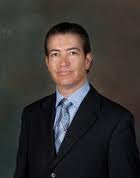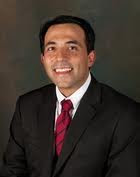A May 29 article in the Huntsville (Ala.) Times indicates that the choice for superintendents of the Huntsville Schools is one between two candidates favored by the north and south sections of the city.
And, in bad news for Brownsville, it's not Brett Springston, currently superintendent of the Brownsville Independent School District, and one of the top three finalists for t
 he position.
he position.Reporter Crystal Bonvillian, of The Times, reports the community is divided over the who the city's next school superintendent should be. Apparently, there is a historical division between the north and south ends of the city with north Huntsville apparently leaning toward Dr. Daniel Brigman, superintendent of the Macon County, N.C., school system, and the south side favor Dr. Casey Wardynski, a retired Army colonel and chief financial officer of the Aurora, Colo., school system.
Springston, who doesn't have a doctorate, appears to be out in the cold among those polled by the newspaper.
The Huntsville schools are currently some $19 million in the red, and Wardynski pointedly touted his background and knowledge of finance.
On the other hand, Brigman, according to the newspaper, spoke largely about improving student achievement.
"Those residents who spoke to The Times Friday had less to say about the third finalist, Brett Springston," reporter Bonvillian wrote.
If the Huntsville school board members did any background checks into Springston's tenure in the BISD, they probably found out that he and the board that chose him to be superintendent in 2009 went through almost $100 million in fund reserves to balance their budgets during that period.
Throughout all that time, Springston and his Chief Financial Officer denied that they were operating under a budget "deficit" and – like former board members Ruben Cortez, Rick Zayas and legal counsel Mike Saldaña – boasted that the budget was in "fine financial shape."
That was before the state's $25 billion budget shortfall forced districts across Texas to slash their budgets and the BISD started offering early retirement packages and slashing department and special programs budgets to meet the state mandate.
Illustrative of the district's straits is that the opening of Dan Breeden Elementary School, scheduled for this fall, will probably be postponed because of a lack of funds.
In interviews with Hunstville media, Zayas is quoted as blaming the current board for the district's problems as is Rolando Aguilar who called Springston's problems in Brownsville a "witch hunt" by the new majority.
Springston is probably not used to be in this kind of competition. The former board, after suspending and then firing Dr. Hector Gonzalez, limited the pool of applicants to current employees of the the BISD. Further, the majority then had chosen Springston to be the interim superintendent.
The newspaper also quotes Jerry Mitchell, president and CEO of the African American Chamber of Commerce, who attended receptions for all three candidates. He said that although he was personally impressed with Springston's "great passion for lifting up low-performing schools," had heard others talk negatively about the candidate.
Among the reasons that Springston gave board members during questioning for leaving a better-paying position ($198,000) for a smaller system, was that he wanted to get more in touch with his wife's family who live in the area.
In other words, does that mean that he wants to live closer to his mother-in-law?
If Springston's maudlin sentimentality doesn't overwhelm the apparently clear-eyed Huntsville school board members, we may have to live with the homeless rejected applicant for the foreseeable future.






























